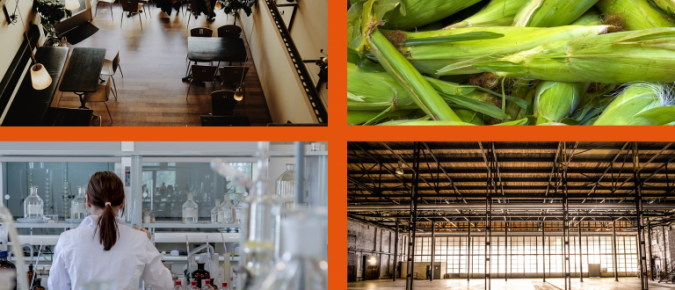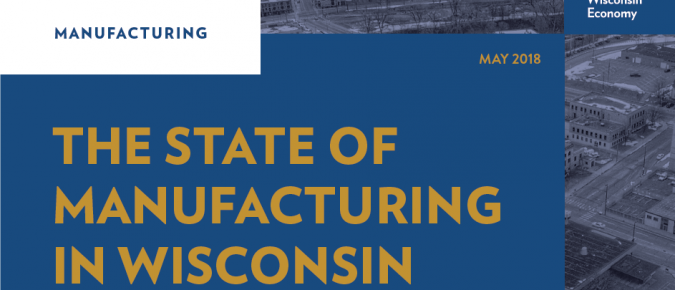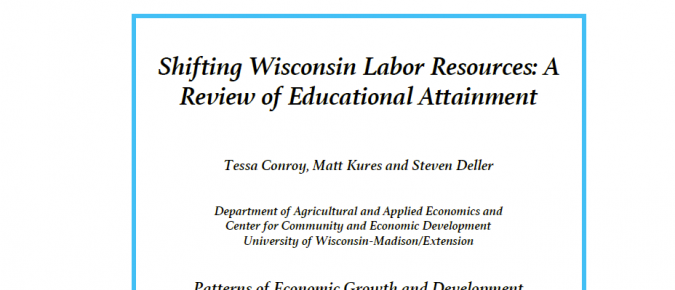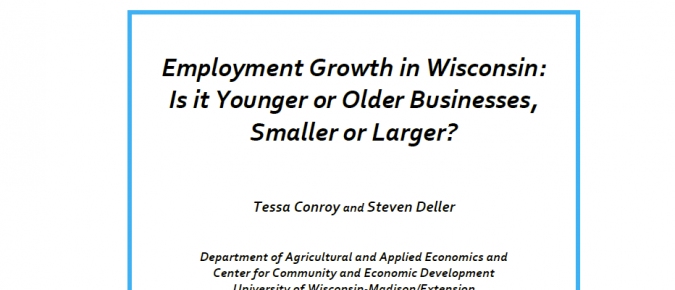Childcare was a challenge for parents before the pandemic and has only become more difficult in recent months. During the pandemic, as much as 60% of childcare providers closed and stopped providing childcare (Bipartisan Policy Center, 2020). While many of those closures were temporary, a recent state-level study estimates that, in absence of additional aid, 30% of the childcare supply in Wisconsin could be permanently lost if providers are closed for more than two weeks without revenue due to COVID-19.
The COVID-19 pandemic has significantly impacted Wisconsin’s economy. When the country reported the first case on January 20th, 2020, there was uncertainty as to how fast and far the virus would spread. On March 11th, the World Health Organization declared a pandemic and on March 16th all Wisconsin public schools were ordered to close while Governor Tony Evers instituted a Safer-at-Home order and closure of all non-essential businesses.
Recent analysis demonstrates that communities of color are disproportionately suffering the health impacts of COVID-19. In Milwaukee County, 29 percent of the population is Black or African American yet Black or African Americans represent 43 percent of COVID-19-related deaths1. Much like the poor health outcomes from COVID-19 are disproportionately suffered by people of color, the economic costs are likely also inequitably distributed across racial and ethnic groups.
Summary Matt Kures discusses potential impacts of the COVID-19 crisis on Wisconsin’s tourism and service economy, including estimated loss of revenue and employment. Webinar Recording Additional Materials Exposed: The Potential Impact of COVID-19 on the Tourism & Service Economy PowerPoint Explore Our Lunch-n-Learn Series
The growth in student debt in the United States has become a cause for concern. At the beginning of 2006, student debt, or loans taken out to pursue higher educational opportunities, was approximately $481 billion. By the beginning of 2019, that amount has grown to nearly $1.6 trillion (Figure 1a). While student loan debt remains smaller than consumer credit debt ($4.1 trillion) or mortgage debt ($15.5 trillion), the rate of growth of student debt is alarming.
July 2019 — Patterns of uneven economic growth and development across the U.S. have been well established in the popular press and academic literature. Some states, such as Mississippi, Alabama and New Mexico, continue to experience higher rates of poverty, lower rates of worker productivity, and modest income growth. Other states, such as Arizona, Colorado […]
June 2019 — Much attention has been paid to the role of entrepreneurship as a source of job creation in recent years. While this is warranted, expansions of existing businesses are also inseparable from job creation and economic growth. In terms of gross job creation, firm expansions contribute a significantly higher number of jobs than […]
EXECUTIVE SUMMARY May 2019 — The following analysis explores the status of manufacturing in Wisconsin by examining long term trends and benchmarking against comparable states in the Midwest region and the U.S. more generally. Key Findings: Despite fluctuations, the recent number of manufacturing jobs in Wisconsin is close to the level in 1970 at 500,000. […]
February 2019 — The relationship between the diversity of a regional economy and economic growth, stability, and resiliency has been at the center of a large academic literature for over 70 years. Drawing on the idea that a diversified portfolio of investments (e.g. stocks, bonds, etc.) can minimize risk and foster sustainable returns (growth) many […]
EXECUTIVE SUMMARY November 2018 — If the vision for Wisconsin’s future economy is one of competitive wages, innovative industry, and an entrepreneurial culture, then there are challenges on the horizon. From the perspective of developing an educated labor force that supports both innovation and entrepreneurship, the metrics presented in this report are troubling. The education […]
EXECUTIVE SUMMARY August 2018 — The analysis presented in this report uses two types of comparisons to evaluate job creation and job loss in Wisconsin. First, we consider trends over time by comparing the most recent years available, 2012 or 2013 depending on the data source, with 2000 and 2009. The year 2000 is useful […]
July 2018 — As Wisconsin’s unemployment rate moves to record lows, many companies have expressed frustration that they cannot find the workers they need. Some employers, workforce development organizations and policy makers attribute the lack of suitable employees to issues surrounding labor quality. Specifically, potential workers may not have the specific skills desired by employees […]
















